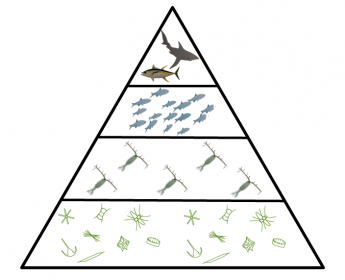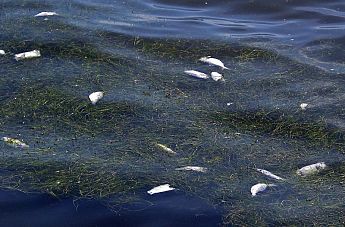What eats what?
Aquatic food webs are complex groups of organisms that perform different functions in the ecosystem. Phytoplankton are small primary producers suspended in water. They use nutrients along with carbon dioxide to harness sunlight energy and create biomass through the process of photosynthesis. Phytoplankton biomass is usually the primary food for other aquatic organisms, including zooplankton. Zooplankton are small, heterotrophic organisms that feed on phytoplankton and other zooplankton, and are themselves food for larger planktivores. In this way, the sun’s energy is transferred up aquatic food webs, eventually feeding apex predators such as sharks and other large fish.
What factors shape food webs?
Aquatic food webs can be characterized by the number of trophic levels and the amount of biomass in each level. Nutrient availability is central in shaping food webs. Plants require nutrients in specific quantities in order to photosynthesize and convert nutrients into useable food. Low quantities of certain nutrients can limit the food energy available in the web. Another factor shaping food webs is the amount of biomass in each trophic level. For example, a food web with many predators may have little prey biomass than one with fewer predators, because the predators eat more of the prey.
Where do humans fit in?
Human activities change aquatic environments and food webs in many ways. We dam rivers to the sea and then reclaim land and re-populate it. Aquatic organisms may be transported around the world through, for example, bilge water in ships, potentially establishing populations of invasive species. Most human populations reside near water, and human activities introduce excess nutrients to aquatic systems through sewage, detergents, fertilizer and animal waste. Humans rely on the oceans for food, and thus play a role as apex predators, influencing aquatic food webs through overfishing. Human activities may decrease the biomass of fished animals, decrease biodiversity, and alter the species present in an ecosystem.





